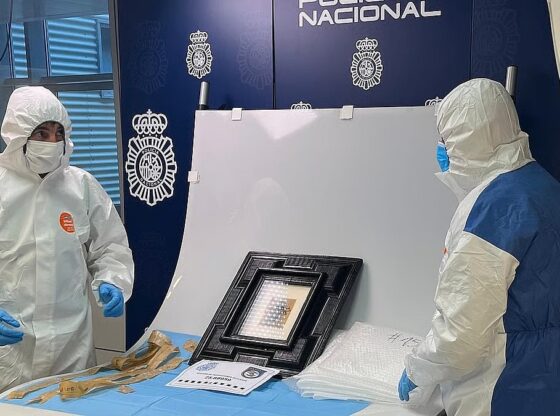The Picasso painting missing for weeks in Spain was forgotten by an art transport company at the entrance of the owner’s building and collected by a neighbor, who thought it was a package, according to police.
Spanish police revealed this Friday, October 24, that they recovered a painting by Pablo Picasso valued at 600,000 euros that had disappeared while being transported to an exhibition in Granada, in southern Spain.
“The Picasso missing during transport to an exhibition in Granada has been recovered. It may never have gotten into the transport truck”, wrote the Spanish National Police on the social network X, where it published a photograph of the painting.
Sources from the police investigation later explained to the EFE news agency that the painting did not even leave the building where the owner of the work lives, in Madrid.
According to the same sources, the company had to collect several works of art from a building on Avenida Pio XII in Madrid, including a painting by Pablo Picasso, to take them to a warehouse, from where they would go, the following day, to Granada.
However, the packed Picasso painting was forgotten at the entrance of the building, where a neighbor later saw it. Thinking it was a package for one of the residents, the woman collected the package and kept it at home, without opening it.
The woman kept the packaging until a few days ago, when her husband told her the news of the missing Picasso whose owner lived on Avenida Pio XII.
Always according to the same investigation sources cited by EFE, it was because of this news that the woman remembered the order she had taken home and later called the police.
The Historical Heritage Brigade “keeps the investigation open” after the Scientific Police “inspected the packaging that contained the painting”, the Spanish police wrote today on the social network X, in the same publication in which they confirmed having recovered the work of art.
The disappearance of “Nature morte à la guitare” (“Still Life with Guitar”), a 1919 work by the Spanish Pablo Picasso, measuring 12.7 centimeters high and 9.8 centimeters wide, was reported to the Spanish national police on October 10th by the CajaGranada Foundation.
This institution explained in a statement that a company specializing in the transport of works of art delivered to it on October 3rd, at the CajaGranada Cultural Center, more than fifty paintings with different origins taken from Madrid to be included in the exhibition “Still life. The eternity of the inert”.
Always according to the same statement, the delivered works were deposited in a space at the foundation, with permanent video surveillance, until October 6th, when they were unpacked and those responsible for the institution and the exhibition discovered that a painting, “Nature morte à la guitare”, was missing, despite it appearing on the transport guides.
Sources investigating the case cited by several local media outlets had revealed that the journey of around 400 kilometers between Madrid and Granada, in the south of Spain, to transport the works (57, initially) took two days to complete, this being one of the aspects on which the investigation focused.
The paintings were transported in a van in which two people followed. After leaving Madrid, they stopped around 27 kilometers from their destination, where they slept in a small hotel, with the two people allegedly taking turns to watch the van, said police sources cited by the Spanish press.
Road trips to transport works of art comply with various packaging rules and require slow driving speeds, so as not to damage the pieces, as recalled by some experts in this type of transport also cited by the Spanish press.
The identity of the owner of “Nature morte à la guitare” has not yet been revealed. It is only known that he is a private collector who acquired the Picasso painting a few years ago for 60,000 euros and that he kept it in a residence in Madrid, from where it was taken on September 25, by a company specialized in transporting works of art, with the aim of being included in the Granada exhibition.
According to the CajaGranada Foundation, the work has now been valued for insurance purposes at a value of 600 thousand euros.

